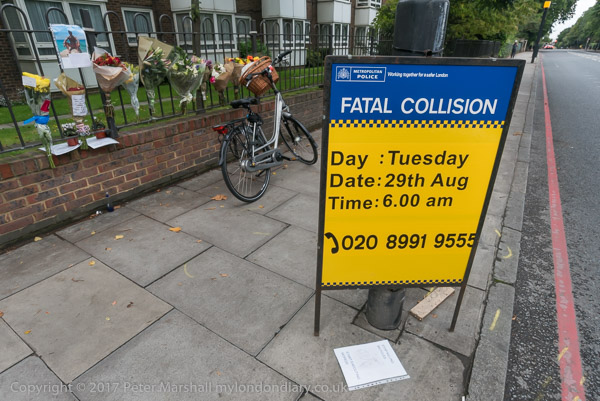
I’ve been a cyclist for over 65 years, getting my first two-wheeler (a very secondhand small bike cleaned up and repainted by my dad) on my sixth birthday. And by the end of that day I was able to ride it without someone with a hand on the saddle as I went along the pavement outside my home. A couple of years later I had a larger bike handed down to me, and was riding on the roads in traffic. And despite what people think, there was plenty of traffic back in the 1950s on some of the roads in outer London where I lived, before any motorways took it away, though there were differences. Traffic speeds were generally much lower, as most cars had very poor acceleration and there were far fewer parked cars on the roads.
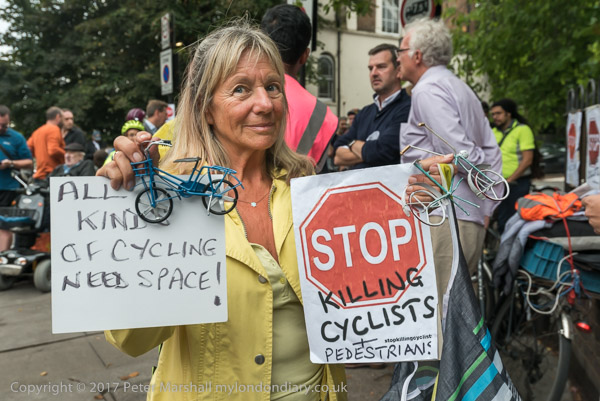
There have been many improvements in the design of cars and of roads since then, all of which seem to have concentrated on making cars go faster, with very little thought about other road users. I remember going in my teens on a visit to the Road Research Laboratory (then not far from where I lived at Harmondsworth) where we saw films and presentations about making dummies inside cars safer in crashes (doubtless an inspiration for J G Ballard) and also designing roads so that cars could go faster around corners and roundabouts. I asked what research they were doing about cyclists and I think the answer was that there was no economic benefit from cycle journeys; certainly they had nothing to show, and their answer to my suggestion that changing corners to make them so cars could go round them faster made them more dangerous for pedestrians was to show me their plans to make pedestrians walk down the street some distance to a crossing point. Pedestrian time had zero value too.
Since my visit in the 1950s, the RRL, now the TRL, has changed a little, and they and others have looked at cycling, though perhaps the best study of cycle-friendly road design has come from Sustrans, for example in their chapter on junctions and crossings.
It was interesting on a visit to Brussels a few years ago to hear the squeal of brakes as motorists stopped to allow pedestrians to cross the road they wanted to turn down. Here drivers assume they always have right of way unless there is a traffic light or marked pedestrian crossing, and the Highway Code, which is fairly clear:
- watch out for cyclists, motorcyclists, powered wheelchairs/mobility scooters and pedestrians as they are not always easy to see. Be aware that they may not have seen or heard you if you are approaching from behind
- watch out for pedestrians crossing a road into which you are turning. If they have started to cross they have priority, so give way
is almost always ignored.
The most common cause of cyclist deaths is lorries and other large vehicles turning left and crushing them. Poor vehicle design means that drivers often cannot see cyclists (and pedestrians) and I cannot understand why this has been allowed to continue. It would be a relatively simple matter to fit glass panels and appropriate mirrors, and now more high-tech solutions are obviously available. There is really no reason why any vehicle with such restricted visibility should be allowed on the road.
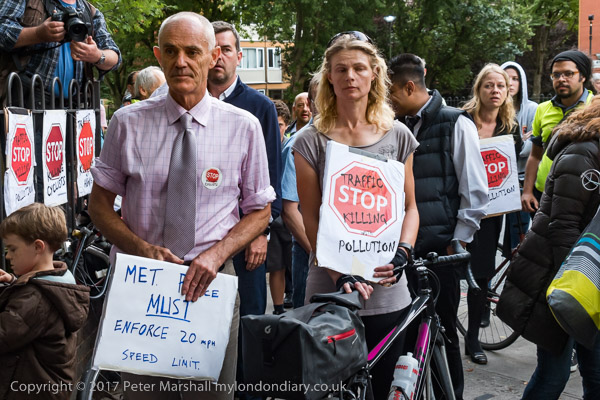
Of course cyclists, particularly inexperienced cyclists, squeeze up on the left side of vehicles waiting at crossings, and the use of Advanced Stop Lines at junctions makes this a more safe manoeuvre – but only if drivers recognise that their left turn is a turn across a cycle lane and should require them to ensure it is clear. There also seems to be an increasing trend for motorists to ignore the need to signal for left turns – something of great importance to both cyclists and pedestrians.
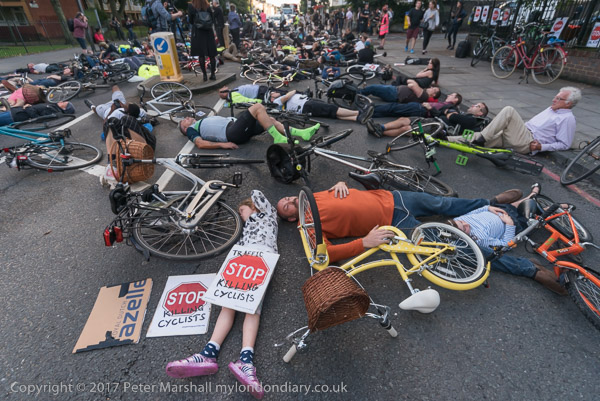
Campaign group Stop Killing Cyclists organised a vigil and die-in on the Camden Rd in the London Borough of Islington following the death of Ardian Zagani who suffered fatal injuries when he was struck by a Ford Transit van just after 6am while cycling to work as a caretaker at a local college on August 29th, 2017. Police originally arrested the driver on suspicion of causing death by dangerous driving, but she was later de-arrested and interviewed under caution. One of the passengers in the van attempted first aid on the victim but A scheme to put a protected cycle lane along this busy road was put forward in 2014, but was not acted on, and campaigners say that it was dropped because TfL (Transport for London) prioritise bus timetables over cycle safety. There have been a number of deaths on this stretch of road in both Islington and Camden and it has been labelled ‘death mile’.
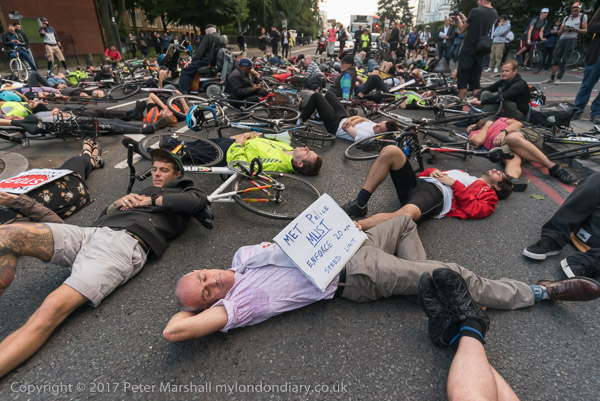
After the speeches, police stopped the traffic for police to go onto the road, where they lay down for 10 minutes to block traffic. Those at the end of the protest, closest to the motorists who were forced to wait were shocked to hear some complaints and comments about cyclists from a few who were suffering this minor delay in memory of the man who died here.
Die-in for cyclist Ardian Zagani
______________________________________________________
There are no adverts on this site and it receives no sponsorship, and I like to keep it that way. But it does take a considerable amount of my time and thought, and if you enjoy reading it, a small donation – perhaps the cost of a beer – would be appreciated.
My London Diary : Buildings of London : River Lea/Lee Valley : London’s Industrial Heritage
All photographs on this and my other sites, unless otherwise stated, are taken by and copyright of Peter Marshall, and are available for reproduction or can be bought as prints.
To order prints or reproduce images
________________________________________________________